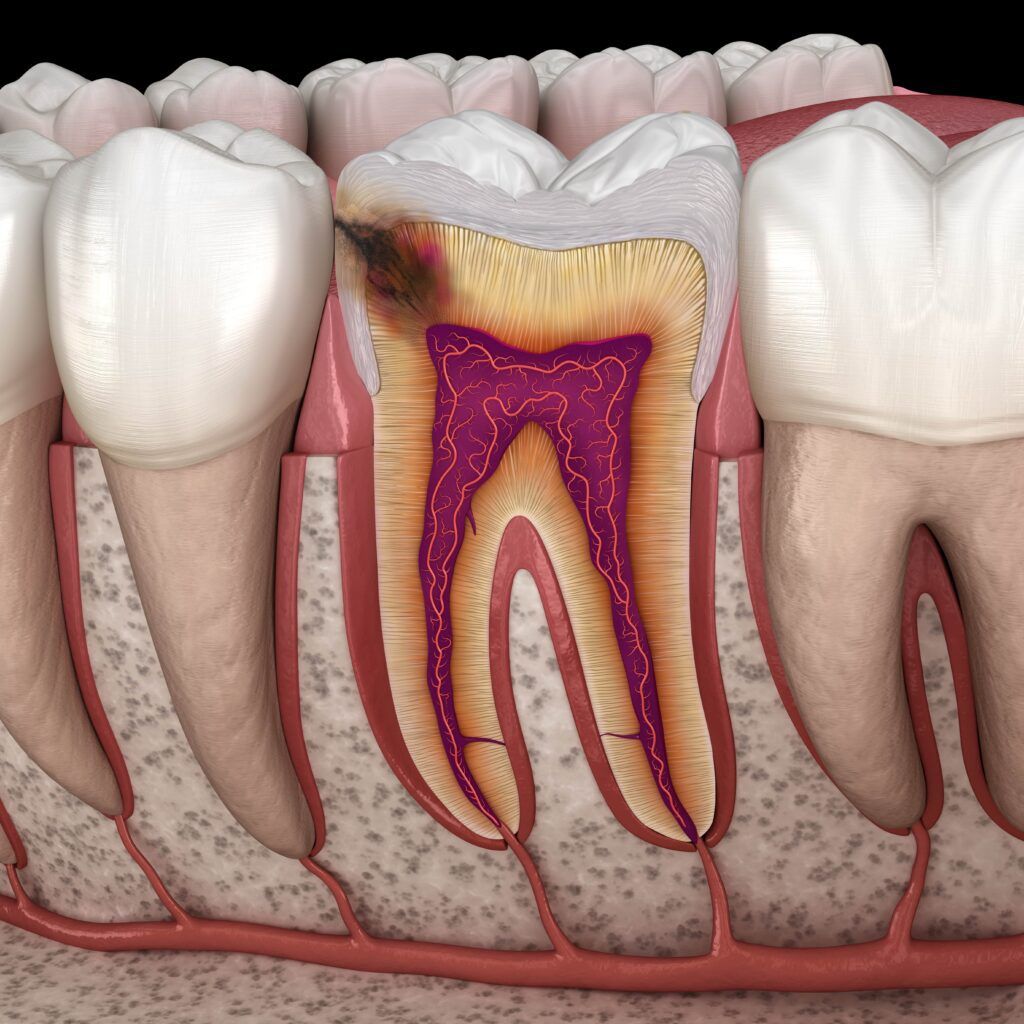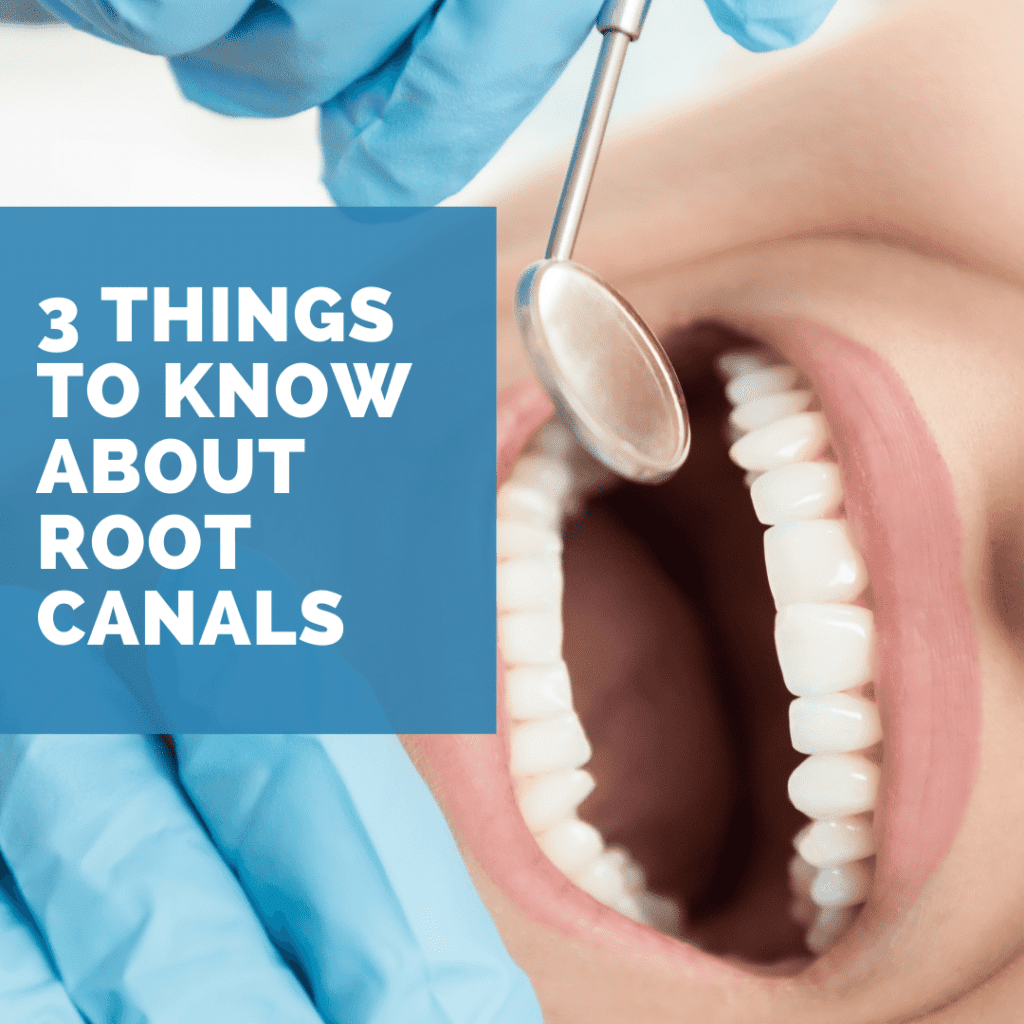Root canals tend to get a bad rep, even though they are effective restorative treatments. A root canal is a dental procedure that removes infected and decayed tissue from the inside of the tooth and within the tooth roots. Here are 3 things you need to know about root canals:
1) Pain is caused by a pulp infection

Many people assume root canal procedures are painful when this is actually not the case. The pain most people associate with a root canal is not due to the procedure, but to a pulp infection inside the tooth.
When bacteria seep through cavities or cracks in the enamel, it enters the soft tissue inside your tooth called “the pulp.” This area contains blood vessels, nerve endings, and connective tissues. If bacteria enters the pulp, this causes infection and inflammation in your tooth. Since the tooth nerve resides in the pulp, this is what causes the pain you feel when eating hot or cold food and when pressure is applied to the tooth with chewing or brushing teeth.
The purpose of a root canal procedure is to remove all infected tissue from within that pulp space. Nowadays, root canals are performed with dental anesthetics, meaning that your mouth will be numb. Once all infected tissue is removed, most of the pain stops because there are no more bacteria in your tooth pulp to cause you discomfort. However, it can take a couple of days for the inflammation to resolve itself. In these cases, it is normal to experience some soreness after having a root canal.
2) Root canals save teeth
Even though root canals may sound intimidating at first, they are actually a great way to save your teeth from being extracted. Unlike other infections, pulp infections cannot effectively be treated using antibiotics. This is because antibiotics need to travel through the blood to reach the infection and cannot reach an infection inside the tooth. Without treatment, the infection will continue to progress and can even spread to the surrounding teeth. Root canals allow your dentist to completely remove the infected tissue from inside the tooth.
Once your tooth pulp has been infected, the only options are root canals or extractions. There is a higher success rate of saving a tooth that has an infected or decayed pulp versus extracting it completely. Not to mention, preserving your natural teeth is always the priority and extractions should always be the absolute last resort.
3) You will need a dental crown after treatment

After a root canal procedure, your dental dentist will place a crown to protect and restore the tooth. This is because during treatment, the inside of your tooth is essentially hollowed out. Although it will be filled with a rubber-like material, teeth that have been treated with root canal therapy are structurally weaker than fully intact teeth.
Therefore, to prevent your tooth from becoming damaged, you need an artificial cap called a “crown” to cover it. A dental crown completely covers and reinforces the entire tooth, decreasing the risk of damage.
When thinking about getting a root canal procedure, remember that they are one of the most common procedures performed by dentists today. Root canals do not cause pain, offer an effective way for you to keep your natural teeth, and will require the use of a dental crown.


